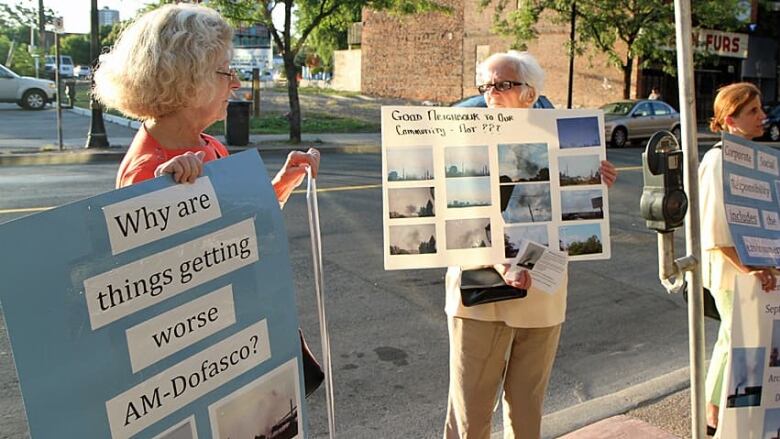Industrial air monitoring station has been shut down for months

Local politicians and environmentalists are baffled this week after learning that an air monitoring station in one of Hamiltons worst neighbourhoods for air quality has been shut down since January.
Lynda Lukasik, head of Environment Hamilton, saysshe only learned this week that the monitoring station in St. Christophers Park stopped working five months ago.
News of the shutdown is prompting the area's councillor Sam Merulla to step in with local funds to get the station running again.
The station is located in the McAnulty Boulevard area, a neighbourhood in the shadow of Hamiltons heavy industry and one of the worst areas for air quality.
Residents of that neighbourhood have complained of higher rates of chest pain, breathing issues and other ailments, Lukasik said. Yet no one has monitored the air there for months.
This is something the community needs to know, said Lukasik, who got official word of the shutdown on Wednesday.
Its in the heart of a neighbourhood thats very close to industry and residents who have been reporting various impacts.
The station is operated by the Hamilton Air Monitoring Network (HAMN), whichis funded by industries such as Arcelor-Mittal Dofasco, Shell Canada and U.S. Steel.
Such companies fundthe stations in Hamilton's industrial area, and the information is sent to the Ministry of Environment as part of its Source Emissions Monitoring program.
Liberty Energy had been funding theMcAnulty monitoring station since 2009. The company once had plans to build a waste incineration plant in Hamilton but pulled out last year. In January, it stopped funding the station.
Merulla, who represents Ward 4, will use local taxpayer money from his area rating budget an estimated $30,000 per year to get the station back online and fund it for the next few months. Hes also talking to industry such as ArcelorMittal Dofasco to see if it will fund the station.
But hes annoyed, he said, because thats not the citys job.
Its getting really tiresome for me, and I know for city council, to always step in and intervene on behalf of the failure at Queens Park.
The province should have mandatory legislation around funding air-monitoring stations, he said. And really, it should be funding the stations itself, like it used to do before the funding was cut in the late 1990s.
Air quality is a big deal to the world, he said. The legislation that exists is toothless, and its not being enforced.
The citys board of health, and its local elected officials, should have known the station wasinactive, he said.
It should never have shut down without us knowing.
HAMN officials couldnt be reached for comment Wednesday afternoon.
The network isn't the only way the province gets air quality data, said Jennifer Hall, spokesperson for the Ministry of Environment. The local office does "additional air monitoring" that includes monitoring particulate matter.
"The local air shed in Hamilton is one of the most highly monitored in the province," she said. "Even with the absence of this station, there are three fixed Air Quality Index stations operated by the Ontario Ministry of the Environment and 14 remaining HAMN stations that provide us with data on air quality in the industrial sector of Hamilton."
Physicist Denis Corr has done extensive mobile air monitoring around Hamilton and found that McAnulty Boulevard has the fifth worst air quality in the city. Its mortality rate is six per cent higher than average.It is particularly high in PM10, which are small inhalable particles.












_(720p).jpg)


 OFFICIAL HD MUSIC VIDEO.jpg)
.jpg)



























































































